- Home
- Neal Asher
Line War ac-5 Page 15
Line War ac-5 Read online
Page 15
‘You mean because you are pointing that thing at me.’ She nodded to the weapon he held.
‘Yeah, that about covers it.’
‘Not really.’
A flicker of movement caught his eye and he looked down to observe the digital display of the rifle rapidly winding down to zero. Swinging the weapon to one side he pulled the trigger. Nothing. How the hell did she do that?
‘Now,’ she continued, ‘I could have stolen that cargo runcible without even coming here to talk to you.’ She walked forward, using one of her auxiliary assister-frame arms to remove a box from her belt pouch. Janger meanwhile stepped back, still holding the weapon. Perhaps he could overpower her, but, being haiman, she would inevitably have nervous-system augmentations and could probably run fight programs in an instant. She could probably flatten him. Was it worth trying? Well, probably not, if what she had said about the insurance was true.
Using her human hands the woman opened the box after placing it on the table. She took out a translucent red orb and four metallic stones smoothly rounded as if taken from a beach. ‘This here is a natural star ruby, from Venus, and the others are ferroaxinite stones with weak monopole characteristics.’ She glanced across at him. ‘But for one other item that is no longer intact, they were once the most valuable objects in my collection. I believe I don’t have to tell you how much they are worth.’
She didn’t. The ruby alone, if it really was natural, would pay for a refit of his living accommodation — something long overdue — and even the AIs themselves had yet to figure out how to manufacture monopole axinite. Such stones were one of the few natural objects that could not be reproduced and, as such, much sought after by rich collectors who wanted something virtually unique.
‘Still not enough to pay for a cargo runcible,’ Janger insisted.
‘Your insurance will pay for that,’ she replied. ‘This is merely to compensate for the trouble I’ve put you to — for which I also apologize.’
Abruptly she turned away and headed back towards the airlock.
‘Does this salve your conscience?’ was Janger’s parting shot.
She paused for a moment. ‘There is no salve for my conscience,’ she told him, then stepped out of sight.
* * * *
Vulture longed for a return to the omniscience of being a ship AI, but the best he could attain was a narrow link to the ‘Prador control system’, from which he began incorporating fragments of astrogation and library data. And gazing through the eyes of the Harpy, Vulture watched the fifty wormships orbiting almost nose to tail — if such could be an apt description of objects that looked like balls of iridescent millipedes as they writhed in orbit around a small hot planetoid close to the nearby sun. This was in fact an inhabited system, with the main human population crammed on to two small worlds both orbiting on the inner edge of what might be described as the green belt. Both of them were also fairly hot, though not as hot as the planetoid, and followed orbital paths mere hundreds of thousands of miles apart, but presently they were on the far side of the sun. Orbital mirrors reflected a lot of heat away from their surfaces to numerous power stations, which converted that sunlight into other forms of electromagnetic radiation and sent it out through a collection of space-based runcibles. This place was one of the power stations of the Polity runcible network.
The inhabitants of the two worlds worked in high-tech industries or research, and were involved in the mapping and control of the solar energy being injected into the runcible network. However, it was still not the plum target it might have appeared, for really, if these worlds went down, it would take but a moment for some other energy source to take up the slack. Knocking out the Caldera worlds would do no more, tactically, than blowing a few fuses in a country’s power grid. Besides, this was a dangerous place to assault, for, like the solar system the devastated Polity fleet had retreated to, a lot of the energy being thrown about here could be employed aggressively. There were obviously many more vulnerable and potentially damaging targets that Erebus could attack. Coming here made no sense at all.
‘Okay, we’re here, and I see that your fifty wormships are nearby,’ said Vulture. ‘So what’s the plan — you going to board them one at a time and kill all their captains?’
Vulture expected no reply as he turned to look at the brass Golem. Mr Crane began picking up his toys from the console, one at a time, and dropping them into his pocket. Once he had finished that, he quickly input a course change and initiated it. The two mated ships abruptly slid sideways.
‘Where the fuck are we going?’ Vulture enquired of his Prador friend.
There came no reply, but somehow Vulture located coordinates. There had been some decidedly odd code coming from the ship AI lately, and Vulture reckoned that Jain-tech, spreading through this ship from the legate’s vessel, had finally reached its frozen brain. Of course, they were now heading straight for the wormships. The main screen greyed a little, and bands began passing across its surface, meaning chameleonware was engaged, for what good it would do them.
‘You said to me that “He must pay,” and I thought he did when you tore him apart, but you weren’t really talking about that legate, were you?’
Crane stared at Vulture for a moment, then tilted his head as if listening to something only he could hear. For the first time Vulture felt really annoyed with the Golem’s reticence. He shrugged, stretched out one wing and pecked at its oily feathers, then stamped up and down his bit of console for a moment.
‘Look, I know how you don’t like talking, but I really need some sort of explanation.’
Crane seemed to ponder this request for a moment, then abruptly he turned his chair and reached out with both hands. The action was so smooth and quick that Vulture had no time to react. The metal hands closed round his body, clamping his wings to his sides.
‘Hey! I was only asking!’
Crane stood up and carried Vulture from the cockpit along a short tunnel leading to a refectory area where the remains of the previous occupants’ last meal mouldered on a table, then down a short zero-G drop-tube and through another tunnel in which the Golem was forced to stoop. A circular hatch sprang open to the left, and Crane ducked through it into a cramped chamber beyond, most of which was occupied by a large steel sphere from which extended masses of optic cables. Woven amid these were the vinelike growths of Jain technology — some of them still moving. Crane set Vulture down on a power conduit, where the bird edged sideways away from a tangle of grey growths gathered like fungus around a junction box.
‘How can you ever trust this stuff?’ he asked.
‘Because I control it,’ Crane replied.
Vulture was so shocked at actually receiving a verbal reply, he completely lost track of what he was going to say next. Crane undogged numerous catches on the sphere, then pulled out a thick round hatch. Watching this operation, Vulture began to realize that this sphere was in fact a Prador war drone, wired into the ship itself. He peered into its interior and saw masses of optics, discrete components like metallic organs, and also Jain-tech. The last was most heavily clumped around the remains of some liver-shaped metal canister. A smell like something rotting on a seashore rose from there.
‘No wonder it’s not talking much now,’ Vulture quipped, for this then was all that remained of the Prador first-child’s frozen brain. So what did Crane want with… Vulture abruptly understood just what the Golem might want and tried to launch himself for the door. Crane spun and caught him in mid-air, turned and inserted him into the sphere, down amid the first-child’s remains.
‘Hey! You can’t do this!’
Tendrils immediately sprouted from the surrounding components, as Vulture struggled desperately for freedom. Crane ran a finger over the vertebrae at the base of Vulture’s long neck, then pressed, hard. Something crunched and Vulture’s struggles died, instantly.
‘You broke my fucking back,’ the bird cried.
Crane removed his hands and stood back, while t
he tendrils groped between feathers and, with the sound of skewers going into kebab meat, penetrated Vulture’s body.
‘Dragon intended only a temporary arrangement,’ explained the Golem.
Vulture shrieked as the hatch fell back into place, locking him into total darkness. Tendrils rustled around him and, though numb below the break in his spine, Vulture could still feel his body being jerked about. A feeling that was both cold and burning rose up through his neck and into his small avian brain. Sound then stopped. An even blacker night descended. All sensation utterly disappeared.
Then came the light.
Vulture suddenly found himself gazing out with full-spectrum vision across the immensity of space, felt vacuum like the wind underneath his wings, and sensed U-space just below him. His comprehension of his world, and the tools he could use to measure and describe it, expanded in an eye-blink. He felt himself, and the ship about him, grow as sensitive as fingertips. The legate vessel was also part of him, but one he could separate away at need. He accessed the ship’s library — a hundred-terabyte crystal store of technical data, multimedia fiction, historical non-fiction and a massive encyclopedia — and incorporated it. He found the Prador first-child — a semi-rigid mind capable of processing the esoteric maths of U-space, but way below the latest revision of the Turing threshold — and selectively incorporated data from it, ignoring the detritus of organic being, the suppressed hate and feelings of ancient betrayal. Only once that data was incorporated did Vulture realize that the first-child had resided in the Jain structure spread throughout the conjoined vessels. Programming links to cabin consoles provided him with access to ships’ logs as well as private journals and sites. He incorporated them for their data and just out of interest, and only then discovered that his compass was now so much larger than it had been when he was an AI aboard a vessel named Vulture.
Then, after the few seconds this all took, the new ship AI rested.
In retrospect, Vulture realized how in his avian form he had been unaware of his limitations. Dragon had deliberately whittled him down to fit into a bird brain, and then made him comfortable in that abode. Now, returned to his previous AI state, and also much expanded, he knew he would never want to go back, and so felt a grudging gratitude for what Mr Crane had done, though some resentment at the Golem’s rather direct approach. Inside his new ship body he sought out the Golem, and found Crane had returned to the console. Using internal scanners Vulture probed and analysed whatever he could of the Golem, which wasn’t a lot. However, it was immediately evident that the inside of Mr Crane looked nothing like it should. There had been major structural alterations and various other alterations to the Golem’s motors and power supplies. Vulture put that down to what Skellor had done to the Golem with Jain technology during his rebuilding process. Skellor had subsequently removed that technology while turning Crane into an envoy to Dragon. The rest of the stuff inside him, currently filling every gap with laminated layers sliding together in ways that did not impede movement and defied analysis, Vulture reckoned derived from Dragon itself. Mr Crane, it appeared, was now solid alien nano-technology from head to foot.
‘Well, thanks for that,’ said Vulture, speaking from the console.
Crane nodded an acknowledgement.
‘You still didn’t answer my original query of why are we here,’ Vulture added.
A wide-band link abruptly established, and through the scanners Vulture traced its source to somewhere inside the Golem itself. Information became available and, though Mr Crane did not care to use human speech, he certainly knew how to talk at this level. Vulture realized that the Golem was rather like those Polity AIs — usually assigned to some esoteric task — who did not employ human words, in fact needed to create sub-minds for that task, since they found it needlessly tedious and vexing. Crane was something like that. Something like that…
‘I see,’ Vulture said. ‘Why you?’
Crane shrugged.
‘Reparation?’ Vulture suggested. Then, feeling Crane’s rage through the link, he added, ‘And revenge?’
Another shrug.
‘Yeah, why not, if you honestly think you’re capable,’ Vulture conceded.
Crane opened a little — allowed Vulture access down that wideband link to glimpse the being that lay at his core. With confident precision the AI reached into a universe of mind to try and assess its potential, its power — but soon retreated in utter confusion and panic.
‘Yeah, I guess you are capable,’ said Vulture, before asserting control of the engines in his body, but not changing his vector. They were going where they needed to go.
7
While humans, with their augmentations, up to and including gridlinks and haiman carapaces, ever strive to become more like AIs, it has been rumoured that there are artificial intelligences being created with mental architectures nearer to the human model. What the hell for? There is nothing a human can do that cannot be bettered by our crystal-minded rulers — our betters. Those who argue against this say, ‘What about art, literature, emotion, love, etc.?’ and patently have no real grasp of just how powerful many AIs can be. Your average runcible AI can simultaneously run models or copies of numerous human minds inside itself as programs. It can put them into virtualities and run them through lifetimes of creativity, emotion, whatever, at many hundred times the speed of reality. However, if it is true that AI minds have been built to the same chaotic mental architecture as humanity, they probably run in Golem bodies to provide a nearer facsimile to human life. And it is certain that, if they have been produced, they are merely objects of curiosity — toys for gods.
— From How It Is by Gordon
There were thousands of information packets to access, thousands of sensors to gaze from, all this information arriving by U-space transmitter with only a delay of a few seconds. Azroc gazed upon space battles fought at AI speeds and observed logistical overlays that seemed made to disassemble spaceships, to disassemble lives. He observed AI combatants — who had to be fully aware of their chances of survival — throwing themselves, without even microseconds of hesitation, at wormships and then being obliterated. They adhered to battle plans utterly, some of them already certain of their own destruction in the execution of those same plans. It was admirable, but Azroc was wary of AI pride. For humans were quite capable of behaving the same.
In this latest scene, now viewed from spy satellites and stealth drones, twelve Polity dreadnoughts and twenty attack ships fought to keep forty-two wormships away from an inhabited world with a population of over a billion. Half an hour before there had been seventeen dreadnoughts, but five of them were now just so much debris and cooling gas, as were five of the wormships. Three wormships were already down on the surface of Ramone, unravelling into giant millipede forms and spewing out other war machines to advance on the Megapolis Transheim. Seeing these millipede forms, Azroc was rather reminded of hooders, those lethal life forms found on the planet Masada. Seeing the advancing whole it seemed tame to call it an army — infestation being a much better word.
ECS forces were arrayed against this attack: AG tanks advanced to form lines, autoguns strode out on silver legs, crowds of soldiers proceeded on foot or in gravharnesses, while troop and gun platforms filled the skies above. Battle had already been joined as jets and the flying skyscrapers of atmosphere gunships bombarded Erebus’s forces. While Azroc watched, one enormous gunship tilted, smoke belching from a hole excavated in its side, and fell with horrible grace towards the enemy. Beam weapons and projectiles flashed against its hard-fields till it seemed to be falling through layer upon layer of smoky glass. A particle beam finally stabbed through its defences, cutting it from stem to stern, and it exploded, raining burning debris on its killers.
The whole scene possessed a horrible inevitability. The forces on the ground were not enough, and simple mathematics told Azroc that, beyond this planet, the remaining Polity dreadnoughts and attack ships could not stop further landings — and that, wit
hout intervention, they were doomed. However, intervention was already arriving. Azroc flicked away to another scene nearly half a light year distant.
The two hammerhead troop carriers, in shape resembling steel waterfowl with those eponymous heads, were preparing for the run towards Ramone. Gathered about them were forty of the new Centurion-class attack ships, and this would hopefully be enough to get the carriers down on the surface, after which the Centurions could engage directly with the wormships. Maybe the extra troops would be enough to swing the land battle, but the extra Centurions wouldn’t be able to defeat the wormships, which was why something else was on its way.
‘Even I wasn’t sure ships like that existed,’ Azroc said as, right on cue, something massive folded out of U-space just beyond the troop carriers.
‘You did not need to know,’ Jerusalem informed him. ‘But you did see the Battle Wagon?’
‘Well I didn’t know about that either.’ The craft mentioned was the capital ship of the fleet Erebus had first devastated, but in its death throes Battle Wagon had taken out a large proportion of Erebus’s forces. A cylinder eight miles wide and twenty miles long, it was yet a minnow compared to this new arrival.
The Cable Hogue was a vessel that could not safely orbit worlds with any crustal instabilities or oceans, simply because its sheer mass could create devastating tides or earthquakes. It was spherical, like a mobile moon with weapons capable of breaking planets, and was the biggest ship presently available to Jerusalem. Azroc wondered if it might in fact be the biggest ship in the Polity, or if there was something else he didn’t yet know about.
‘Erebus managed to hijack some fleet vessels,’ Azroc cautioned.
‘That is a risk we must take, since there was nothing else I could get there quickly enough to be effective.’
‘I see.’ Azroc switched views to another solar system and now gazed upon an image, enhanced from a distance, of a hot planetoid being orbited by a line of wormships. But they had done nothing more there since their arrival, so he switched views again to see glimpses of an occasional wormship and an occasional asteroid. He then reduced distances by a factor of a thousand, which showed him wormships cruising amid a belt of asteroids, and a fleet of Polity vessels, led by something very similar to Battle Wagon, heading out from the inner inhabited world of that solar system towards the asteroid belt.

 The Bosch: A Novella (Polity Universe)
The Bosch: A Novella (Polity Universe) Jack Four
Jack Four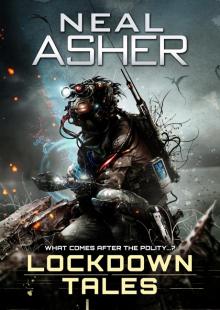 Lockdown Tales
Lockdown Tales The Warship
The Warship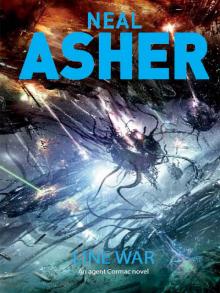 Line War
Line War Total Conflict
Total Conflict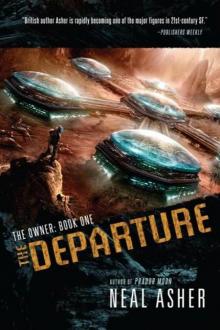 The Departure
The Departure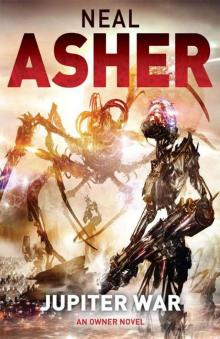 Owner 03 - Jupiter War
Owner 03 - Jupiter War Polity Agent
Polity Agent Prador Moon
Prador Moon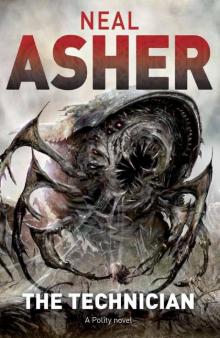 The Technician
The Technician Hilldiggers
Hilldiggers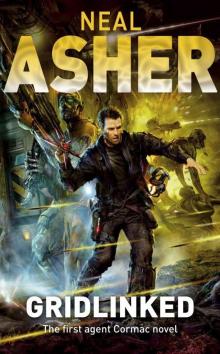 Gridlinked
Gridlinked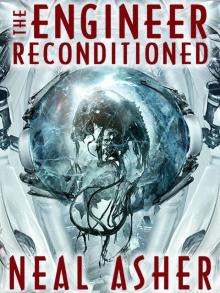 The Engineer ReConditioned
The Engineer ReConditioned Dark Intelligence
Dark Intelligence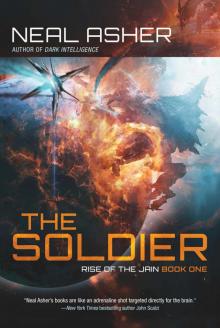 The Soldier: Rise of the Jain, Book One
The Soldier: Rise of the Jain, Book One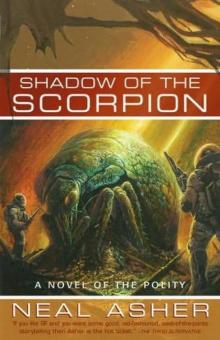 Shadow of the Scorpion p-2
Shadow of the Scorpion p-2 The Skinner
The Skinner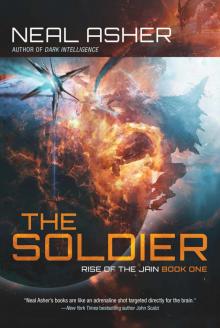 The Soldier
The Soldier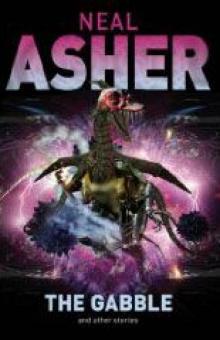 The Gabble p-13
The Gabble p-13 The Gabble and Other Stories
The Gabble and Other Stories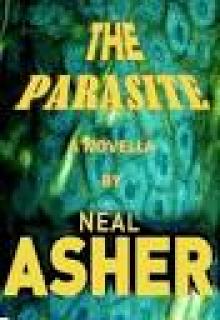 The Parasite
The Parasite The Other Gun
The Other Gun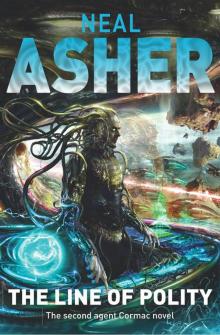 The Line of Polity
The Line of Polity Zero Point (Owner Trilogy 2)
Zero Point (Owner Trilogy 2)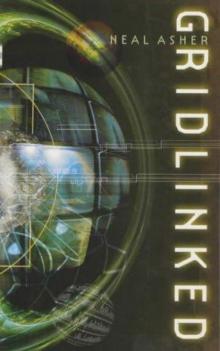 Gridlinked ac-1
Gridlinked ac-1 Prador Moon p-1
Prador Moon p-1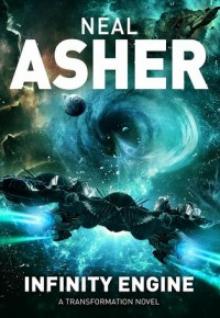 Infinity Engine
Infinity Engine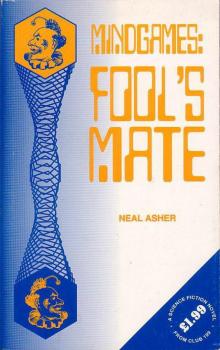 Mindgames: Fool's Mate
Mindgames: Fool's Mate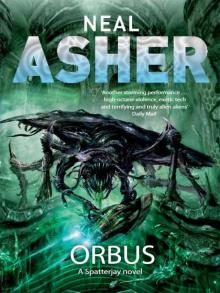 Orbus
Orbus Africa Zero
Africa Zero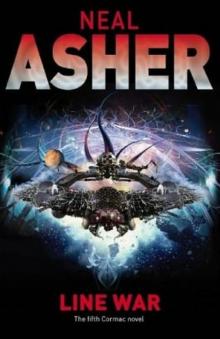 Line War ac-5
Line War ac-5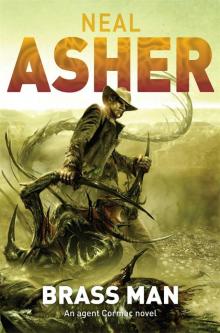 Brass Man
Brass Man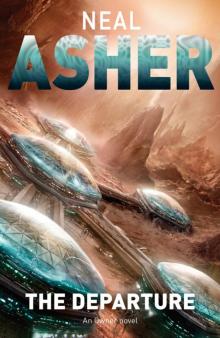 The Departure to-1
The Departure to-1 Cowl
Cowl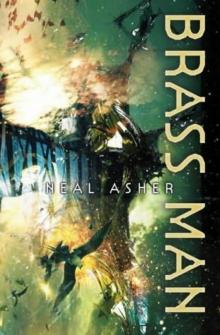 Brass Man ac-3
Brass Man ac-3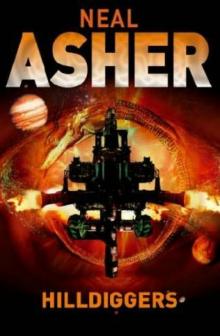 Hilldiggers (polity)
Hilldiggers (polity)![Greg Bear - [Eon Trilogy 1] - Eon (rescan) (v1.0) Read online](http://i1.bookreadfree.com/i2/04/08/greg_bear_-_eon_trilogy_1_-_eon_rescan_v1_0_preview.jpg) Greg Bear - [Eon Trilogy 1] - Eon (rescan) (v1.0)
Greg Bear - [Eon Trilogy 1] - Eon (rescan) (v1.0) The Skinner s-1
The Skinner s-1 The Voyage of the Sable Keech s-2
The Voyage of the Sable Keech s-2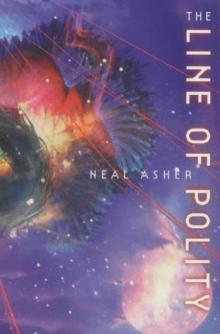 The Line of Polity ac-2
The Line of Polity ac-2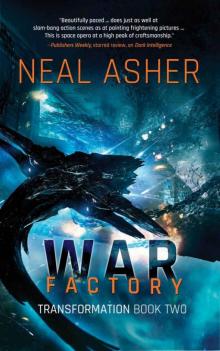 War Factory: Transformations Book Two
War Factory: Transformations Book Two Polity Agent ac-4
Polity Agent ac-4